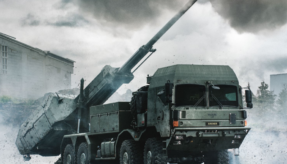
Some 100 counter-IED experts from NATO member states and partners have attended a demonstration of the French Counter-IED Exploitation Laboratory (CIEL) at NATO HQ.
The unique counter-IED analysis laboratory has been designed to provide means of analysing threats in the field thus plugging a capability gap and supporting national forces.
“The CIEL laboratory is unique and meets the needs of those in the field perfectly,” says Jamie Shea, NATO Deputy Assistant Secretary General for Emerging Security Challenges. “It’s easy to deploy, flexible and modular. This type of capability will help give the armed forces a technological edge and better meet the challenges we face.”
“The CIEL laboratory was designed with the dual objective of protecting forces by adapting our tactics through analysis of evidence found in operational searches or of IED remnants after an explosion, and attacking the networks by identifying those who made and planted the device, through forensic analysis and DNA sampling,” explains Lieutenant-Colonel Charles, Director of Research, Analysis and Information Management, Joint Munitions and Explosive Device (MUNEX) Threat Processing Unit, French Ministry of Defence.
The laboratory itself is light, transportable and deployable in under an hour: it takes up only one cubic metre, the equivalent of eight boxes, and weighs only 300kg. Five specialists make up CIEL, chemistry, electronics, forensics and explosive ordnance disposal who investigate the IEDs, supported by a unique database containing over 60,000 events.
“One of the functions that really interests our NATO partners is the software’s ability to predict events that could occur in the future,” says Lieutenant-Colonel Charles. “It can identify places where a threat may arise. We have been able to test it successfully in Mali,” he adds. The database meets NATO interoperability standards and can be shared and enriched by NATO member states, in real time.
The laboratory has been developed following France’s experience in Afghanistan, its first test was a successful deployment in Mali in 2015. The laboratory was also deployed and tested during exercise “Citadel Kléber 2015″.
If you would like to join our community and read more articles like this then please click here








